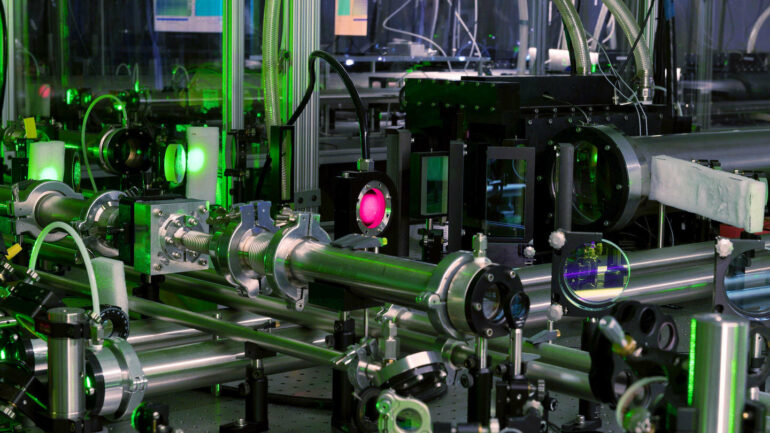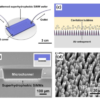Scientists have used a common weather forecasting technique for insights into how powerful lasers turn hunks of solid material into soups of electrically charged particles known as plasmas.
Using this time-tested technique in a new context could help researchers make important measurements in inertial confinement fusion devices, a concept being explored as a way to harness fusion energy. This process, which powers the sun and stars, could be a green way to create electricity on Earth without producing greenhouse gases or long-lived radioactive waste.
The scientists from PPPL, a U.S. Department of Energy (DOE) national laboratory managed by Princeton University, have measured the dense cloud of plasma produced by a strong laser striking a solid target. The intense heat caused atoms from the surface to evaporate and emit energetic X-ray light.
The measurement gauged the speed of the light using the Doppler effect—the same phenomenon that causes ambulance sirens to rise in pitch as they approach and then fall as they move away. Meteorologists rely on this effect to measure the speed of thunderstorms.
Physicists want to gain a better understanding of dense plasma in part because it is produced by inertial confinement fusion devices—facilities like the DOE’s National Ignition Facility at Lawrence Livermore National Laboratory that last year produced more fusion power than the energy it took to heat the plasma. The more physicists can understand the behavior of the resulting dense plasma, which is ten billion times denser than the plasma inside doughnut-shaped magnetic tokamaks, the more likely they could create fusion more efficiently.
The scientists found evidence for the existence of a barrier, or sheath, between the outer and inner layers of the dense plasma cloud. This observation suggests that laser-produced dense plasma behaves similarly to less-dense plasma. The finding marks the first time scientists have used this Doppler technique to measure very dense plasma. The experiment was performed using Colorado State University’s Advanced Laser for Extreme Photonics (ALEPH) facility.
The results show that dense plasma behaves much like other types of plasmas do, behavior that scientists have not been able to directly observe until now, reported Frances Kraus, lead author of a paper reporting the results in Physical Review Letters.
Prior to this finding, researchers did not know whether they could measure X-rays with precision in dense plasma, which can obscure such observations. “Scientists did not believe that you could pick out the X-ray behavior within all of the other signals,” Kraus said. “But our diagnostic shows that you can.”
Invented in 1960, lasers are used for a wide range of tasks, including surgery, welding, and printing. A laser—the term stands for “light amplification by stimulated emission of radiation”—consists of rays of light that all have the same consists of rays of light that all have the same frequency. In addition, the photon particles that make up laser light are all traveling in the same direction and orientation. As lasers have become more powerful, there has grown a need to understand their fundamental characteristics.
“You have to understand what these lasers create before you can find uses for them,” Kraus said. “This is fundamental stuff. These super-powerful lasers will have lots of applications in the future. We just don’t know yet what they will be.”
More information:
B. F. Kraus et al, Ablating Ion Velocity Distributions in Short-Pulse-Heated Solids via X-Ray Doppler Shifts, Physical Review Letters (2022). DOI: 10.1103/PhysRevLett.129.235001
Provided by
Princeton Plasma Physics Laboratory
Citation:
Scientists measure laser-heated plasma using Doppler weather forecasting technique (2023, March 31)



